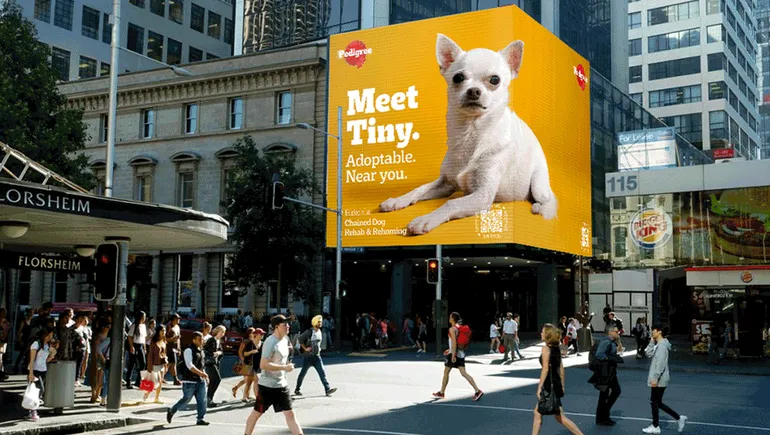
Marketing To A High-End Consumer, Using The Luxury Strategy
40 years ago, a group of European luxury brands, famous but small at the time, decided to use the opportunity of globalization to grow significantly beyond the small circle of their happy-but-few historical customers. To do so, they needed to implement a marketing strategy, but they quickly discovered that while the usual marketing strategies would help them grow, they would also put them out of the luxury bracket. So, they decided to implement a totally new business strategy, which lies behind the nonstop success of those brands. All this is detailed in The Luxury Strategy, the book that I co-authored with Jean-Noël Kapferer, based on my own experience with Louis Vuitton- one of the leaders of this strategic move. For this article, I will focus on the marketing aspect of this strategy, and, more precisely, on what we named “the anti-laws of marketing”. In fact, we coined the term anti-law of marketing to designate the counterintuitive managerial principles, which made these brands command their incredible pricing power and margins.
Reaching your client
The first step is to understand that in the so-called luxury market, there are three possible strategies, which I named in my book as luxury, fashion and premium. The difference between these three strategies is huge. It does not change much in the eyes of most basic consumers, at least in the short-term. But when one has to manage a brand, the difference is pivotal. In fact, if you decide to implement a fashion or a premium strategy, the classical marketing styles works pretty well.
If you decide to implement a luxury strategy, you need to reconsider all the aspects of your marketing management.
A. The luxury strategy aims at creating the highest brand value and pricing power by leveraging all intangible elements of singularity- i.e. time, heritage, country of origin, craftsmanship, man-made, small series, prestigious clients, etc.
B. The fashion strategy is a totally different business model: here, heritage, time, are not important; fashion sells by being fashionable, which is to say, a very perishable value.
C. The premium strategy can be summarized as “pay more, get more.” Here the goal is to prove -through comparisons and benchmarking- that this is the best value within its category. Quality/price ratio is the motto. This strategy is, by essence, comparative.
The luxury strategy was originally developed for the broadly defined luxury market, and it is there that you can find it the most today as well– in fact, it’s the most efficient strategy in this market. It is seldom met on other markets, even though it can be very successful there, as brands like Apple and Nespresso have demonstrated. There are 24 anti-laws (see the full list below); thereafter, I analyze four that require an in-depth treatment.
The 24 anti-laws of marketing
– Forget about positioning; luxury is not comparative.
– Does your product have enough flaws to give it soul?
– Don’t pander to your customers’ wishes.
– Keep non-enthusiasts out.
– Don’t respond to rising demand.
– Dominate the client.
– Make it difficult for clients to buy.
– Protect clients from non-clients, the big from the small.
– The role of advertising is not to sell.
– Communicate to those whom you are not targeting.
– The presumed price should always seem higher than the actual price.
– Luxury sets the price; price does not set luxury.
– Raise your prices as time goes on, in order to increase demand.
– Keep raising the average price of the product range.
– Do not sell.
– Keep stars out of your advertising.
– Cultivate closeness to the arts for initiate.
– Do not relocate your factories.
– Do not hire consultants.
– Do not test.
– Do not look for consensus.
– Do not look after group synergies.
– Do not look for cost reduction.
– Do not sell openly on the Internet.
Anti-law #1: Forget about positioning, because luxury is not comparative
In consumer marketing, at the heart of every brand strategy, you will find the concept of positioning, of the unique selling proposition (USP) and the unique and convincing competitive advantage (UCC A). Every classic brand has to specify its positioning, and then convey it through its products, its services, its price, its distribution and its communication. Positioning is the difference that creates the preference for a given brand, over the one that it has decided to target as a source of new business and whose clients it is going to try to win over.
Nothing is more foreign to this approach than luxury. When it comes to luxury, being unique is what counts, not any comparison with a competitor. Luxury is the expression of a taste, of a creative identity; luxury makes the bold statement “this is what I am,” not “that depends”– which is what positioning implies. It is identity that gives a brand that particularly powerful feeling of uniqueness, timelessness, and the necessary authenticity that helps give an impression of permanence. Chanel has an identity, but not a positioning. Identity is not divisible, it is not negotiable– it simply is. Luxury is superlative, and not comparative. It prefers to be faithful to an identity rather than be always worrying about where it stands in relation to a competitor.
Anti-law #3: Do not pander to your customers’ wishes
One of the major anti-laws of marketing looks like heresy to classical marketing theory. After all, isn’t the credo of all well-managed companies to be customer-oriented? Shouldn’t any marketing plan start by summarizing the voice of the consumer? Yes, but only for those brands that do not follow the luxury strategy. This does not mean being deaf, of course, but the function of luxury brands is to create dreams, not to answer to problems and needs. Luxury is a non-necessity made desirable: it sells promotion emotions (self elevation, pleasure, recognition), not prevention emotions (risk reduction, absence of problem and discomfort). Promotion emotions lead to thrill, excitement and delight. Prevention emotions lead to security, confidence, and satisfaction.
There is another structural reason why traditional marketing is prohibited in the luxury strategy: using market studies to listen to the consumer leads to a regression to the mean. And luxury must be different. Luxury brands are cultural forces. Luxury is about taste education. This is why it flirts so much with art, avant-garde art. Luxury brands do not aim at being popular (that is to say, liked by everybody today), but instead aim at setting the long lasting standards of taste for tomorrow. Capitalizing on what the majority of average present targeted consumers declare they like today is not the route to build the future Louis Vuitton bag. We must surprise the customer, bringing something he or she was not expecting. What luxury sells is excitement, new territories; not security, not problem reduction. Think about the first iPhone.
Anti-law #10: Communicate to those whom you are not targeting
Luxury has two value facets – luxury for oneself and luxury for others. To sustain the latter facet, it’s essential that there should be many more people that are familiar with the brand than those who could possibly afford to buy it for themselves. In traditional marketing, the keyword is return on investment. In advertising for example, the media plan must concentrate on the target consumers and nothing but the target consumers– every person reached beyond the target is a waste of investment money. In luxury, if somebody is looking at somebody else and fails to recognize the brand, part of its value is lost. It is essential to spread brand awareness beyond the target group, but in a very positive way– brand awareness is not enough in luxury; it has to be prestigious.
Anti-law #16: Beware of celebrities
This third anti-law has been received with surprise by many professionals and executives in the luxury sector – after all, when one browses through the pages of glossy magazines, celebrities are everywhere in the advertisements, as well as in the pages relating who attended what select event sponsored by a luxury brand. Celebrities are to be used with caution in the luxury strategy. They are not to be used as selling agents for new customers to buy the product through an imitation model (“I want to buy the bag because this celebrity has it.”)– this is the fashion business model. They must be used, when used, as a testimonial (“This famous person is also using my bag, staying in the hotel I went to last year.”) for existing customers– it comforts the status of being an extraordinary product for a usual customer, which is also an ordinary product of extraordinary people.
Implementing the luxury strategy beyond the luxury market
When you consider those anti-laws, you see that they define a whole consistent and original marketing strategy– the luxury strategy. You also see that this strategy is not limited to the existing luxury market, although it is the place where it is the most relevant– hence its name. Apart from the 12th anti-law (“Luxury sets the price, price does not set luxury.”), the word “luxury” does not appear in their expression. This means that the marketing strategy defined by those laws can be implemented beyond the luxury market.
For instance, Apple, which is not a luxury brand, has been immensely successful in applying the luxury strategy in the computer and phone market, where the pure luxury market is just a niche, even though it can be a beautiful one, as Vertu has demonstrated for mobile phones. As soon as you have a unique product and service, this strategy is worth to be considered. It can also be used when you are facing scarcity of human talent– McKinsey is a very good example in the consulting business. Or when you are facing scarcity of resources- think of the problems of sustainable development, and the example of the Tesla strategy in full electric cars. Think also of the issues of agriculture and bio-food.






